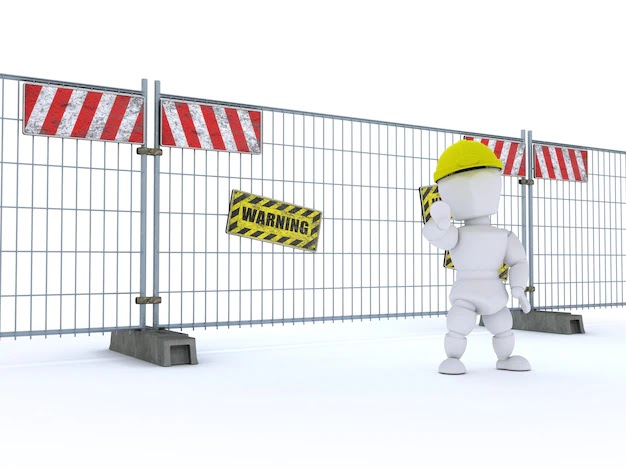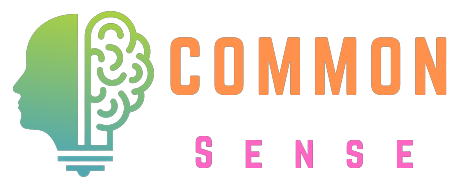Practical Tools for Problem-Solving
I. The Importance of Structured Problem-Solving
Unstructured approaches to problem-solving can lead to confusion, wasted time, and suboptimal outcomes. Structured tools like flowcharts and decision trees allow for:
1. Clarity: Breaking down problems into manageable parts.
2. Efficiency: Reducing time spent on guesswork.
3. Consistency: Ensuring logical and data-driven decisions.
4. Visualization: Making complex processes easier to understand.
A flowchart is a graphical representation of a process or system, using symbols like arrows, rectangles, diamonds, and ovals to illustrate steps and decisions. Flowcharts are particularly helpful for analyzing workflows, identifying bottlenecks, and understanding the steps needed to achieve a specific goal.
a) Process Mapping: Visualizing a sequence of actions in tasks like project planning or customer onboarding.
II. What Are Flowcharts?
A flowchart is a graphical representation of a process or system, using symbols like arrows, rectangles, diamonds, and ovals to illustrate steps and decisions. Flowcharts are particularly helpful for analyzing workflows, identifying bottlenecks, and understanding the steps needed to achieve a specific goal.
1. Common Uses of Flowcharts
a) Process Mapping: Visualizing a sequence of actions in tasks like project planning or customer onboarding.
b) Troubleshooting: Diagnosing technical issues in systems or machinery.
c) Task Automation: Designing algorithms for software development.
a) Define the Problem: Clearly state the issue you're addressing.
2. How to Create a Flowchart
a) Define the Problem: Clearly state the issue you're addressing.
b) Identify Key Steps: List all steps involved in solving the problem or completing the process.
c) Choose Symbols: Use standard symbols (e.g., rectangles for steps, diamonds for decisions).
d) Draw Connections: Use arrows to link steps and show the flow of decisions.
e) Test and Refine: Review your flowchart for clarity and completeness.
A flowchart for troubleshooting customer support issues might look like:
1. Start → 2. Identify Issue Type → 3. Provide FAQ Solution or Escalate → 4. Issue Resolved? → Yes: End; No: Continue Support.
Decision trees are another problem-solving tool that involves a tree-like structure. They help evaluate multiple options, especially when decisions involve probabilities or outcomes. Each "branch" of the tree represents a decision path, with leaves indicating the possible results.
a) Strategic Planning: Deciding between business strategies or investment options.
3. Customer Support Workflow
A flowchart for troubleshooting customer support issues might look like:
1. Start → 2. Identify Issue Type → 3. Provide FAQ Solution or Escalate → 4. Issue Resolved? → Yes: End; No: Continue Support.
III. What Are Decision Trees?
Decision trees are another problem-solving tool that involves a tree-like structure. They help evaluate multiple options, especially when decisions involve probabilities or outcomes. Each "branch" of the tree represents a decision path, with leaves indicating the possible results.
1. Common Uses of Decision Trees
a) Strategic Planning: Deciding between business strategies or investment options.
b) Risk Management: Evaluating possible outcomes of actions.
c) Data Analysis: Building predictive models in machine learning.
a) Identify the Main Decision: State the question or issue to be addressed.
2. How to Create a Decision Tree
a) Identify the Main Decision: State the question or issue to be addressed.
b) List Options: Outline all possible choices.
c) Add Probabilities: If applicable, estimate the likelihood of each outcome.
d) Evaluate Outcomes: Assign values to the results (e.g., costs, benefits).
e) Analyze the Best Path: Choose the option with the most favorable results.
a) Main Decision: How to allocate a marketing budget?
3. Choosing a Marketing Strategy
a) Main Decision: How to allocate a marketing budget?
b) Options: Online Ads → Probable ROI = High; Traditional Media → Probable ROI = Moderate.
c) Outcome: Choose the option with the best projected ROI based on the decision tree analysis.
1. Enhanced Communication: Both tools simplify explanations, making them ideal for team discussions.
IV. Flowcharts vs. Decision Trees: When to Use Each
While both tools are valuable, their applications differ based on the problem:
| Criteria | Flowcharts | Decision Trees |
|---|---|---|
| Purpose | Visualizing processes and workflows | Evaluating decisions and outcomes |
| Focus | Step-by-step instructions | Strategic options and consequences |
| Complexity | Simpler processes | Complex decisions with multiple variables |
| Best For | Task automation, troubleshooting | Business strategy, risk management |
V. Benefits of Using Problem-Solving Tools
1. Enhanced Communication: Both tools simplify explanations, making them ideal for team discussions.
2. Reduced Errors: By following a structured approach, mistakes can be minimized.
3. Time-Saving: Visual frameworks help streamline decision-making.
4. Scalability: Useful across industries—from software development to healthcare.
In some cases, you might benefit from using both tools together. For example:
1. Use a flowchart to map out an initial process.
VI. Combining Flowcharts and Decision Trees
In some cases, you might benefit from using both tools together. For example:
1. Use a flowchart to map out an initial process.
2. Integrate a decision tree at critical junctures to evaluate options and outcomes.
3. Product Development:
a) Start with a flowchart outlining stages like research, design, testing, and launch.
b) Use a decision tree to decide whether to proceed to the next phase based on market feedback.
VII. Digital Tools for Creating Problem-Solving Frameworks
Several software tools can help you create flowcharts and decision trees efficiently:
1. Lucidchart: Ideal for collaboration and flowchart design.
2. Miro: Great for brainstorming and visual planning.
3. Microsoft Visio: Advanced diagramming tool for professionals.
4. Draw.io: Free and user-friendly for both flowcharts and decision trees.
5. XMind: Excellent for mind mapping and decision analysis.
1. Keep It Simple: Avoid overcomplicating your diagrams; focus on clarity.
VIII. Practical Tips for Effective Use
1. Keep It Simple: Avoid overcomplicating your diagrams; focus on clarity.
2. Review Regularly: Update your tools as processes or decisions evolve.
3. Engage Your Team: Collaborate with others to ensure accuracy and inclusivity.
4. Test Scenarios: Simulate different paths to ensure your tool covers all possibilities.
5. Document Outcomes: Keep records of decisions and processes for future reference.

Flowcharts and decision trees are powerful tools for solving problems and making decisions systematically. Practical tools for problem-solving is by understanding their unique strengths and using them appropriately, you can enhance clarity, efficiency, and outcomes in any problem-solving scenario. Whether you’re streamlining workflows or evaluating strategic options, these tools offer practical solutions for navigating complexity.
Take the time to practice and refine your use of these frameworks. Over time, you'll develop confidence in tackling even the most challenging problems with a structured, effective approach.
Ques 1: What is the difference between a flowchart and a decision tree?
Ans: A flowchart visually represents a sequence of steps or actions in a process, often focusing on workflows and procedures. It uses symbols like rectangles for tasks and diamonds for decisions. A decision tree, on the other hand, is a tool for evaluating multiple options and their outcomes. It is more focused on choices and their consequences, using a branching structure to illustrate paths and results.
Ques 2: When should I use a flowchart instead of a decision tree?
Ans: Use a flowchart when you need to map out a process or workflow in a linear and step-by-step manner, such as troubleshooting or automating tasks. A decision tree is better suited for scenarios where you need to evaluate different options, assess risks, or predict outcomes, such as selecting a business strategy or analyzing risks.
Ques 3: Are there software tools for creating flowcharts and decision trees?
Ans: Yes, several tools can help you create these diagrams. Popular options include Lucidchart, Microsoft Visio, Draw.io, XMind, and Miro. These platforms offer templates and drag-and-drop functionality, making it easy to design both flowcharts and decision trees.
Ques 4: How do these tools improve problem-solving?
Ans: Both flowcharts and decision trees enhance problem-solving by providing clarity, structure, and visualization. They help break down complex problems into manageable parts, reduce guesswork, and enable data-driven decision-making. This ensures consistency and efficiency while minimizing errors.
Ques 5: Can I combine flowcharts and decision trees in one process?
Ans: Absolutely! Combining these tools is especially useful in complex scenarios. For example, use a flowchart to map the steps of a process, and integrate a decision tree at critical points where strategic choices or evaluations are needed. This hybrid approach leverages the strengths of both tools for comprehensive problem-solving.

Conclusion
Flowcharts and decision trees are powerful tools for solving problems and making decisions systematically. Practical tools for problem-solving is by understanding their unique strengths and using them appropriately, you can enhance clarity, efficiency, and outcomes in any problem-solving scenario. Whether you’re streamlining workflows or evaluating strategic options, these tools offer practical solutions for navigating complexity.
Take the time to practice and refine your use of these frameworks. Over time, you'll develop confidence in tackling even the most challenging problems with a structured, effective approach.
FAQ
Ques 1: What is the difference between a flowchart and a decision tree?
Ans: A flowchart visually represents a sequence of steps or actions in a process, often focusing on workflows and procedures. It uses symbols like rectangles for tasks and diamonds for decisions. A decision tree, on the other hand, is a tool for evaluating multiple options and their outcomes. It is more focused on choices and their consequences, using a branching structure to illustrate paths and results.
Ques 2: When should I use a flowchart instead of a decision tree?
Ans: Use a flowchart when you need to map out a process or workflow in a linear and step-by-step manner, such as troubleshooting or automating tasks. A decision tree is better suited for scenarios where you need to evaluate different options, assess risks, or predict outcomes, such as selecting a business strategy or analyzing risks.
Ques 3: Are there software tools for creating flowcharts and decision trees?
Ans: Yes, several tools can help you create these diagrams. Popular options include Lucidchart, Microsoft Visio, Draw.io, XMind, and Miro. These platforms offer templates and drag-and-drop functionality, making it easy to design both flowcharts and decision trees.
Ques 4: How do these tools improve problem-solving?
Ans: Both flowcharts and decision trees enhance problem-solving by providing clarity, structure, and visualization. They help break down complex problems into manageable parts, reduce guesswork, and enable data-driven decision-making. This ensures consistency and efficiency while minimizing errors.
Ques 5: Can I combine flowcharts and decision trees in one process?
Ans: Absolutely! Combining these tools is especially useful in complex scenarios. For example, use a flowchart to map the steps of a process, and integrate a decision tree at critical points where strategic choices or evaluations are needed. This hybrid approach leverages the strengths of both tools for comprehensive problem-solving.








Do Leave Your Comment